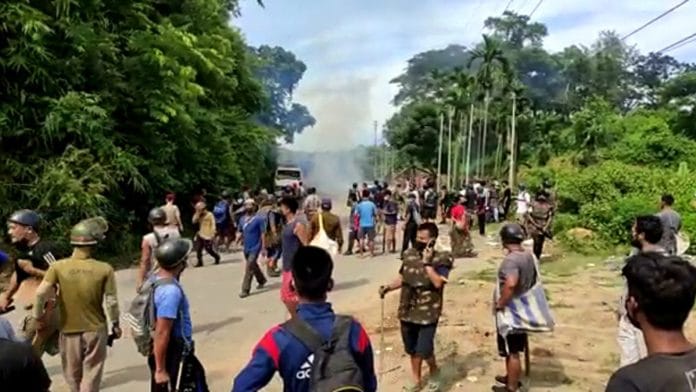New Delhi: The long-standing border dispute between Mizoram and Assam escalated unprecedentedly Monday and five Assam policemen were killed after violence erupted along the interstate border in Cachar district.
In episode 798 of ‘Cut The Clutter’, ThePrint’s Editor-in-Chief Shekhar Gupta contextualised the border dispute between the two states by delving into the history of the creation of the Northeastern states and also spoke about the persisting “legacy issues” surrounding their borders.
Gupta called the border violence earlier this week a “national shame”, especially because one party — the Bharatiya Janata Party — is currently the dominant force in the Northeast.
“The BJP has also set up the North Eastern Democratic Alliance or NEDA. In spite of that, armed forces of two states have fought battles on their borders,” he added.
History of border complications
Speaking about the border disputes plaguing the Northeast, Gupta recalled the 1979 massacre of 54 Assamese civilians by neighbouring Naga tribal groups, as well as the 1985 Assamese-Naga clashes at Merapani.
He explained that initially the Northeast states were “all Assam”, except for Tripura and Manipur that were Union Territories.
Nagaland was the first state to break away from Assam following violent incidents involving Naga insurgents. It was founded as an autonomous state within Assam in 1957 and obtained full statehood in 1963.
However, Nagaland’s borders were drawn in “a hurry”, Gupta said, causing a discrepancy between the political boundaries of the newly founded state and the traditional boundaries from the perspective of tribal groups.
“In the Northeast, tradition and modernity always clash,” he noted.
Also read: Amit Shah has ‘failed’ India by sowing hatred, says Rahul Gandhi over Assam-Mizoram border row
‘Sensitive’ location of Cachar district & creation of Mizoram
Gupta also specifically focused on the Cachar district, which is “sensitively” located in Assam and shares borders with Manipur, Mizoram, Tripura as well as Bangladesh.
Due to its location, the demographics of Cachar district are complicated. The point where one enters Mizoram from Assam is a place called Vairengte, the gateway to the state, which is also the site of the ongoing violence.
But this violence between Assam and Mizoram is not new. “Even before [July 2021], there have been fights between the populations on both sides, sometimes with the police getting involved,” Gupta said. However, he added that no deaths were seen before this.
Gupta also talked about the role played by the Indira Gandhi government in the founding of Mizoram as a Union Territory in 1972, following years of insurgencies in Mizo Hills. It became a full-fledged state in 1987.
However, much like with the creation of Nagaland, the Mizoram’s borders were also redrawn “in a hurry”, Gupta said. “A lot of history, ethnicity and tribal claims were overlooked.”
CAA-NRC in Northeast
Gupta also referred to the present situation in the states and the Narendra Modi government’s push for the Citizenship Amendment Act (CAA) and the National Register of Citizens (NRC).
“With the CAA-NRC, you are lighting up a fire you won’t be able to control,” Gupta said.
“Some of what is happening today is a result of a lack of understanding of the Northeast’s sensitivities, as well as a lack of appreciation for the keenness of the Northeast’s ethnic minorities to preserve their identities,” he added.
Watch the full episode here:
Also read: Centre summons chief secretaries, DGPs of Assam, Mizoram amid border dispute






